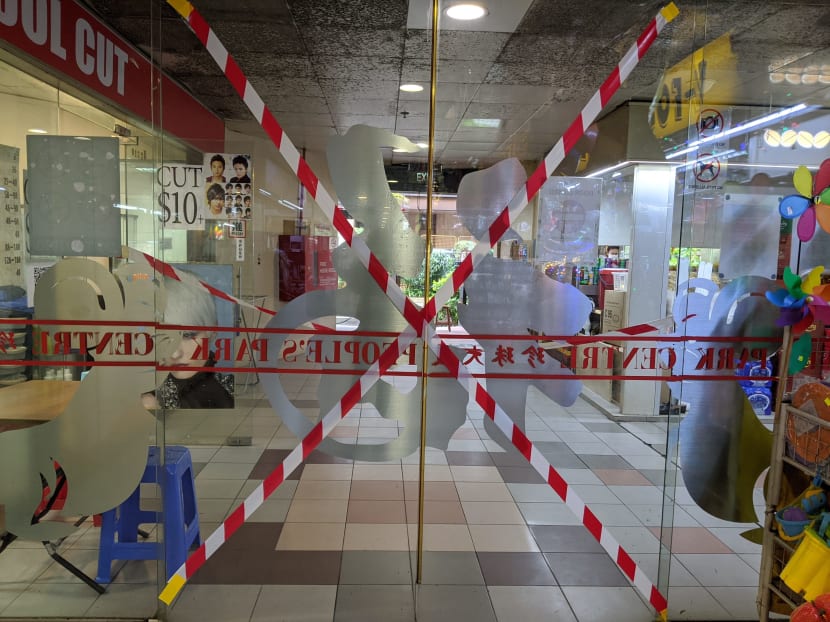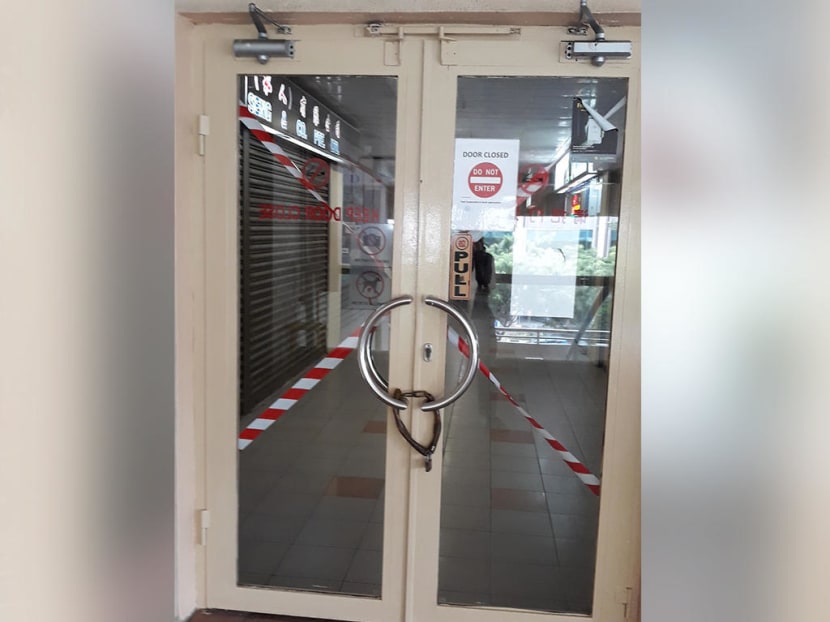5 malls breached fire safety rules after Covid-19 access control measures were put in place: SCDF
SINGAPORE — Five shopping malls were found to have breached fire safety rules after they padlocked several exits.
- Several doors at some malls were found to have been padlocked
- The Singapore Civil Defence Force has issued the mall operators with notices, fines
- Buildings must comply with fire safety rules even as they restrict public access during the pandemic
- TODAY’s checks on seven malls found that fire safety rules were largely met
- Shoppers and store owners said that more signs pointing to exits are needed
SINGAPORE — Five shopping malls were found to have breached fire safety rules after they padlocked several exits.
This was the outcome of checks by the Singapore Civil Defence Force (SCDF). The breaches took place after access control measures were rolled out at shopping complexes to curb the spread of Covid-19.
In response to TODAY’s queries on Monday (Aug 24), SCDF said that it completed 4,425 checks at various premises as of July 31, including at 113 malls.
Among the five malls found to have flouted fire safety rules was People’s Park Centre near Chinatown, SCDF said.
TODAY reader David Kwok Ng Kan first flagged concerns about locked entrances at People’s Park Centre in a Voices letter published last Thursday.
SCDF said that the five malls, including People’s Park Centre, have been handed warnings to remedy the fire hazards or fines, or both, and have since rectified the infringements.
SCDF declined to name the other four malls that flouted the rules.
Last Sunday, TODAY checked out seven shopping centres in central Singapore and they appeared to have largely abided by fire safety requirements set out by the authorities.
These are People’s Park Complex and People’s Park Centre near Chinatown, as well as Ion Orchard, Plaza Singapura, 313@Somerset, Ngee Ann City and Wisma Atria malls along the Orchard Road shopping belt.
However, shopowners and shoppers said that there could be more signs to point them to possible exits in an emergency.
Concerns over fire safety emerged after malls began leaving only some entrances on the ground floors open and locking other points of entry — to comply with occupancy limits imposed by the authorities to stem the spread of the coronavirus.
Under the rules, all malls and large standalone stores that exceed 930 sqm in gross floor area can hold only one person for every 10 sqm.
SCDF said that buildings must still comply with fire safety requirements to enable quick and safe evacuations during a fire, even as they roll out Covid-19 safe management measures.
Buildings must:
Ensure that restricted entry and exit points have doors that can be automatically unlocked to allow evacuation once fire alarms are triggered
Ensure that barricades used to prevent access to entrances and exits must be easily removable, with clear notices informing the public that the barricades can be removed in a fire
Immediately broadcast during a fire through their public announcement system that all exits can be used for evacuation
REMOVABLE BARRIERS
When TODAY visited Ngee Ann City on Sunday, swinging doors at the entry and exit points on the ground floor were barricaded, but they were unlocked and could still be opened.
Barriers in front of the doors could also be removed and there were signs indicating that the doors can be used in an emergency evacuation.
The doors at People’s Park Centre that were closed to shoppers were no longer locked and could be opened. The barriers around them were also removable.
But there was an unused automatic sliding door at People’s Park Centre with a red and white tape plastered over it. There was no indication of whether it could be opened during an emergency.
Madam Ng Chiew Har, 63, who runs a luggage store near that door, said that she was concerned about the lack of safe escape routes. The taped door would be her closest exit if a fire breaks out.
“Because of Covid-19, they close the door. But if there is a fire one day, we don’t have a fire escape. This is another risk,” she said.
While there are other ways out of the complex, she said that everyone would probably rush to the nearest exit during an emergency. “If we really start panicking, who will remember where the doors are?” she asked.

At Plaza Singapura, there were signs on locked sliding doors telling shoppers that the doors would be unlocked automatically for evacuation.
At the nearby Ion Orchard mall, barricades at some doors that were closed to the public were affixed with signs stating that the public may remove them in an emergency.
MORE SIGNS NEEDED
Shopper Aye Su, 39, who is self-employed, said that there should be signs indicating whether some of the shuttered entrances at Ion Orchard can be used as an exit during an emergency. There was no indication on the doors to say that they would open automatically if the fire alarm goes off.
Ms Shereen Low, a 34-year-old teacher, said that malls should install bright signs specifying where the emergency exits are.
SCDF said that members of the public may report potential fire hazards by calling its fire hazard reporting line on 1800 280 0000.
They may also email //scdf_fire_safety_feedback [at] scdf.gov.sg">scdf_fire_safety_feedback [at] scdf.gov.sg or report the potential hazards via SCDF’s myResponder mobile application.









